Chalupa vs Tostada differences Similarities Explained

Your Guide to Common Mexican Dishes La Mesa Mexican Restaurant
However, the main difference between a tostada and a taco is the shell. Tostadas come on a flat shell served open-faced. Tacos come in a folded shell that holds the ingredients inside. The shell itself can also vary in ingredients and preparation. The tostada has a fried or toasted corn tortilla as a base.
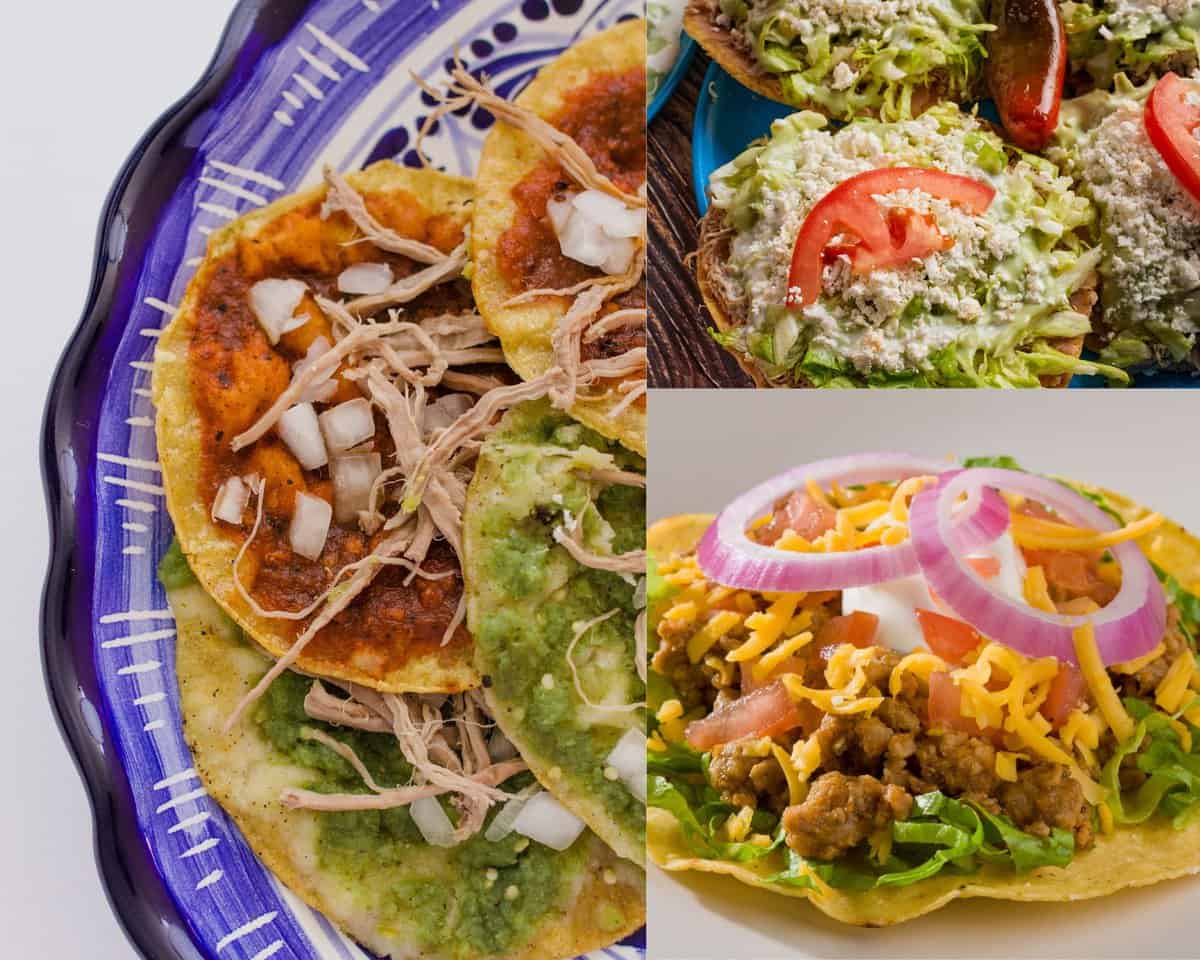
Chalupa vs Tostada What's the Difference? Drizzle Me Skinny!
Chalupa vs Tostada: Overview Origin. Chalupa originated from Mexico in the Hidalgo, Oaxaca, Guerro, and Puebla regions. Chalupa is a Spanish name for a boat, thus the shape of the tortilla used in its preparation. Tostada was first invented in the Mesoamerica region that runs through Central Mexico from Belize, Guatemala, Honduras, Nicaragua.

Pin on Somewhat healthy eats!
Instructions: - Preheat oven to 375 degrees F (190 degrees C). - In a medium skillet over medium heat, cook the ground beef or turkey with onion until meat is browned and vegetables are tender; drain off fat. Add the garlic powder, chili powder, cumin and salt and pepper to taste; mix well. Simmer for 10 minutes.

Tostadas y chalupas YouTube
- Tostadas and chalupas are both types of Tex-Mex cuisine. - Tostadas are made from fried tortillas and have a crunchy texture. - Tostadas serve as a base for various toppings such as beans, meat, and seafood. - Chalupas are made from corn dough and shaped like a shallow cup or bowl. - Chalupas are traditionally topped with salsa, cheese, and lettuce. - Chalupas are generally not made from.
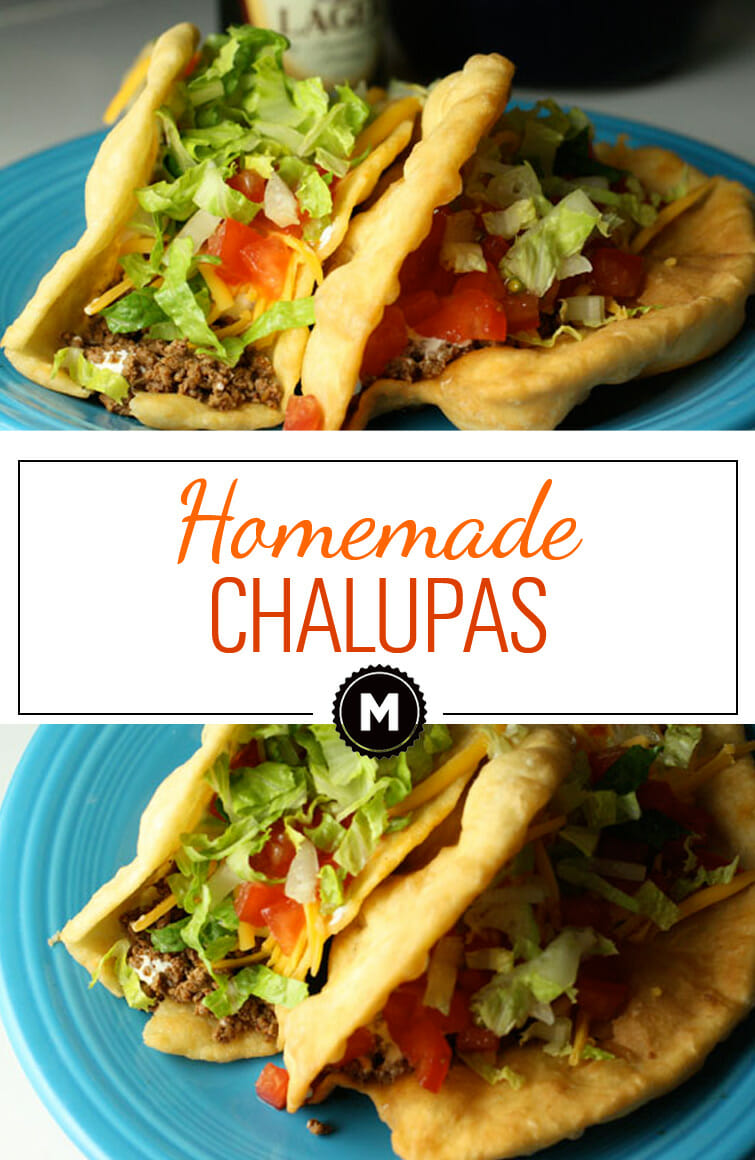
Chalupas Homemade and delicious Macheesmo
Chalupas are usually shaped like a boat and fried while tostadas are fried or baked flat. In this article, we have compared all aspects of these delicious Mexican dishes. From preparation to ingredients, and from nutrition facts to how tostadas and chalupas are served and eaten, we have covered it all in this article.

Homemade Chalupas cocinasModernas Mexican chalupas recipe, Homemade
The difference between a tostada and a chalupa is the shape of the corn tortilla. Because the word "chalupa" means "boat" in Spanish, there's a slight curve to a chalupa that can make it looks pretty similar to a taco. A tostada is also fried but is laid flat to better hold all of its toppings!

Chalupa vs Tostada What's the Difference? Drizzle Me Skinny!
Nutritional Value Comparison of Chalupa vs. Tostada Recipes. Due to the deep-fried nature of chalupas, the nutritional comparison of these two dishes has some big differences. As you can see from this handy chart, the chalupa is higher in calorie count, cholesterol, carbohydrates, fat, and saturated fat content.
My Homemade Life Chalupas or Tostadas
Mexico is famous for its delightful cuisines, which have captured the hearts of thousands all over the world. Tostada and chalupa should be at the top of the list regarding distinctiveness. The main difference between chalupa and tostada is that tostadas have a stiffer corn tortilla as its foundation, whereas chalupas are softer tortillas.
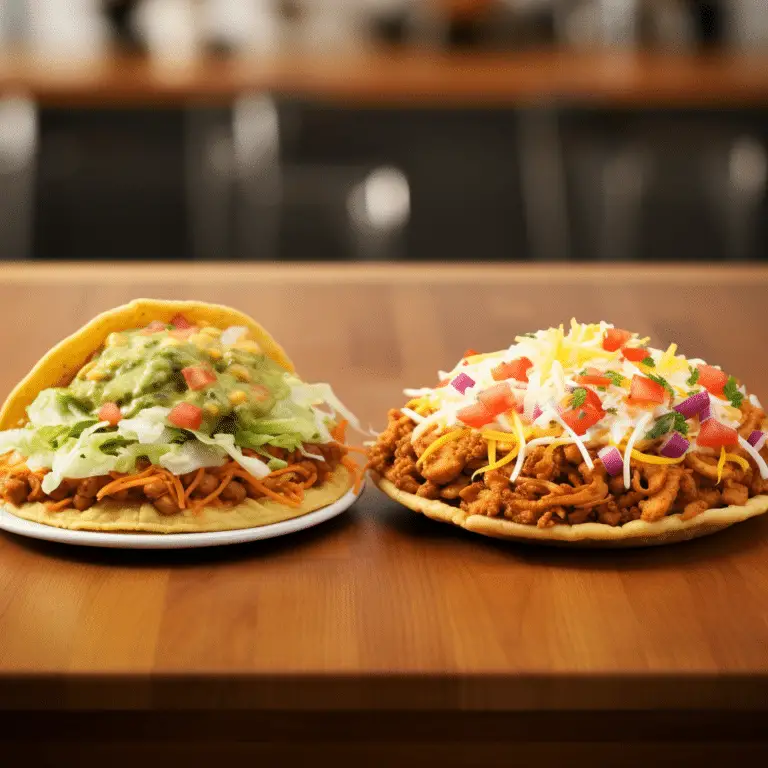
Chalupa vs Tostada differences Similarities Explained
What Are The Key Differences Between Tostada vs Chalupa. Origin: Tostada and Chalupa are rooted in the rich culinary history of Latin America. Tostada, a beloved Mexican dish, has been enjoyed for centuries in various regions of Mexico. Its creation can be traced back to ancient civilizations, where corn tortillas were a staple food. On the.
Chalupastyle Tostadas
Tostadas, on the other hand, showcase flat, thin tortillas that have been fried or baked to golden perfection, providing an ideal canvas for a diverse assortment of flavorful ingredients. These culinary creations, born from rich Mexican traditions, have evolved to showcase distinct regional influences and creative innovations.
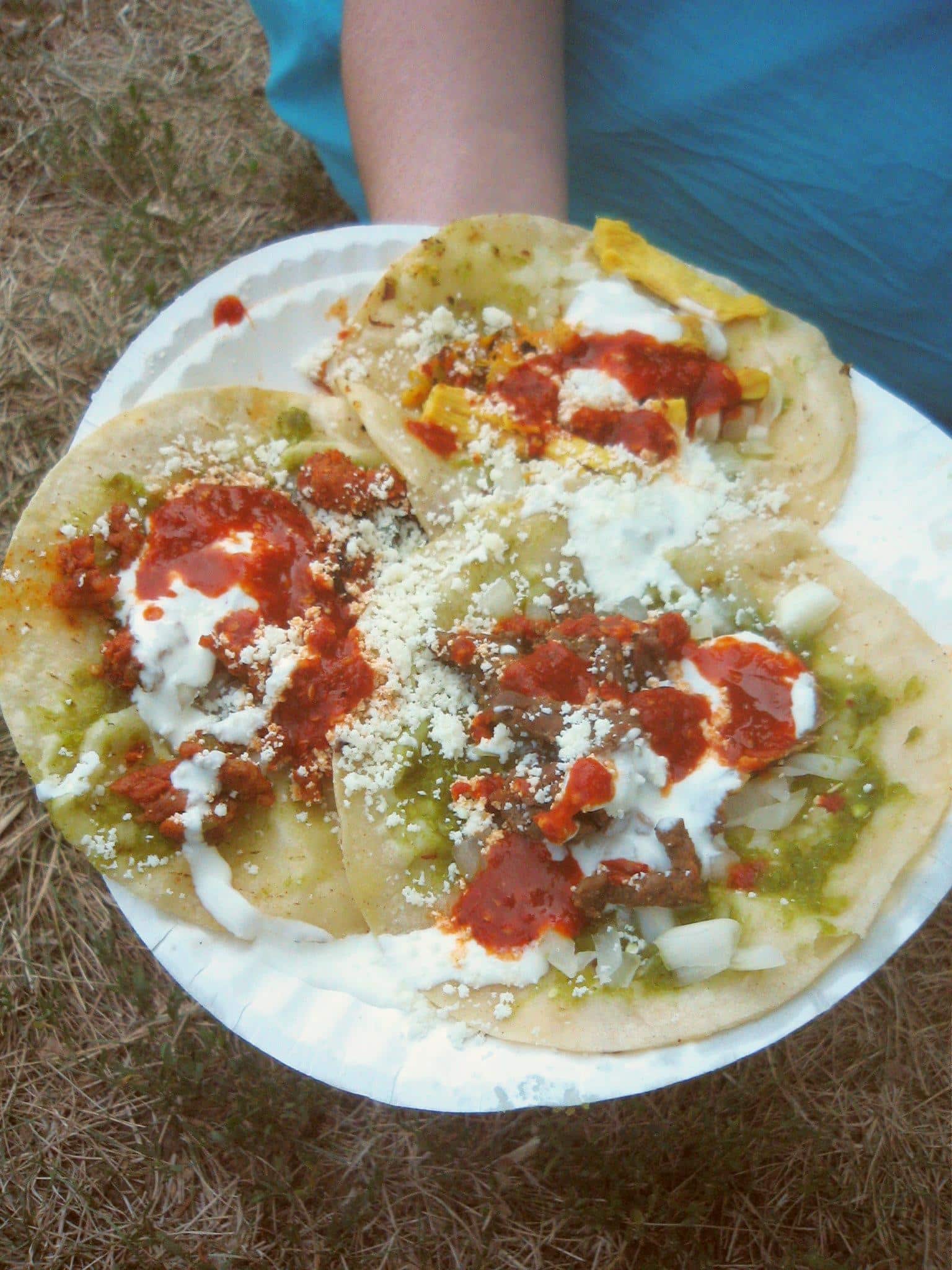
Chalupa vs Tostada Julian Nayuri
A Chalupa is a fried tortilla shell typically filled with meat, cheese, and salsa, while a Tostada is a flat, crispy fried tortilla topped with refried beans, lettuce, cheese, and other toppings. Thus, the main difference lies in the shape and the way the tortilla is used in each dish. A is a popular street food in Mexico and has a rich history.

Tostada Vs Chalupa What's The Difference? Foods Guy
Known as little boats, chalupas have a concave shape that allows them to hold plenty of fillings, while tostadas are flat and crispy, providing a sturdy base for stacking ingredients. The tostadas are made from frying or toasting stale day-old tortillas, while chalupas are a fresh tortilla deep-fried.
Turkey Tostadas and Homemade Pico TaylorMade
The Difference. Essentially, the type of tortilla used for each type is the main distinction. Tostadas are prepared using tougher corn tortillas, whereas chalupas are made with soft flour tortillas. Although tostadas are usually served flat and topped, the tortilla isn't always baked. However, to guarantee crispiness, people usually bake the.

Tostada vs Chalupa A Quick Summary of Differences
A chalupa can sometimes be shaped like an oblong little boat. (Which is exactly what "chalupa" means in Spanish — little boat). When a chalupa is shaped this way, it's one of the easiest ways to tell it apart from a tostada, which is always a flat, circular shell. The texture is also different, as tostada shells are made from frying or dry.

Chalupa vs Tostada What's the Difference? Karinokada
What Is A Chalupa Vs Tostada? The form of the maize tortilla distinguishes a tostada from a chalupa. The term "chalupa" implies "boat" in Spanish, chalupas have a slight curvature that makes them seem similar to tacos. A tostada is cooked, but people place it flat to retain all of the toppings better!
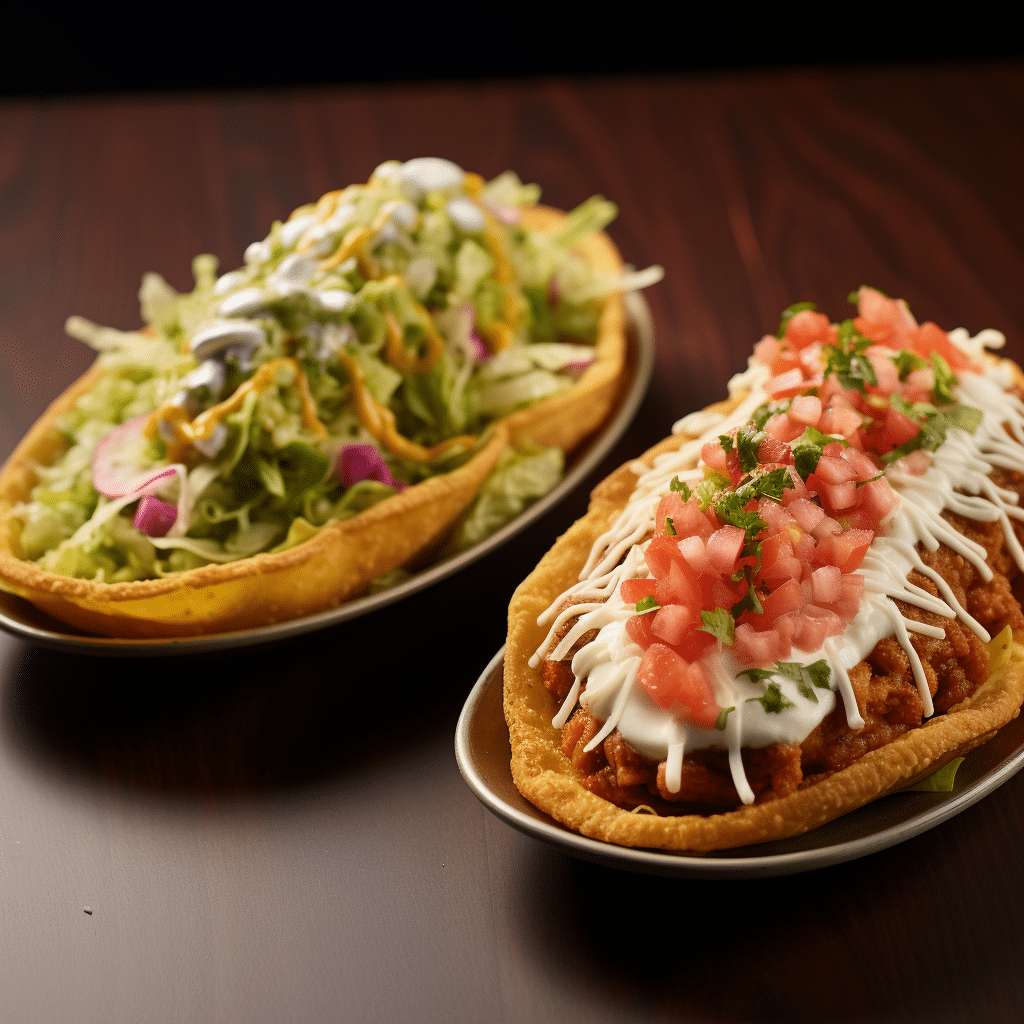
Chalupa vs Tostada differences Similarities Explained
The deep-fried dough of a chalupa lends a rich, savory flavor and a satisfying crunch that gives way to a softer interior. In contrast, a tostada is all about the crunch. The toasted tortilla base has a more neutral taste, allowing the variety of toppings to shine. The layer of refried beans, fresh vegetables, cheese, and tangy sour cream.